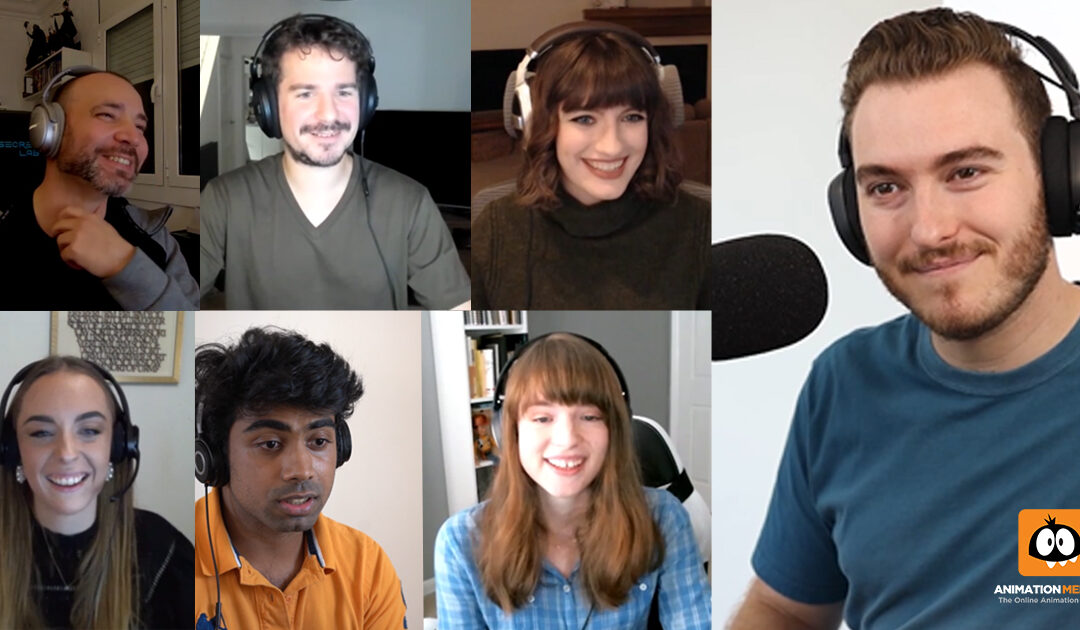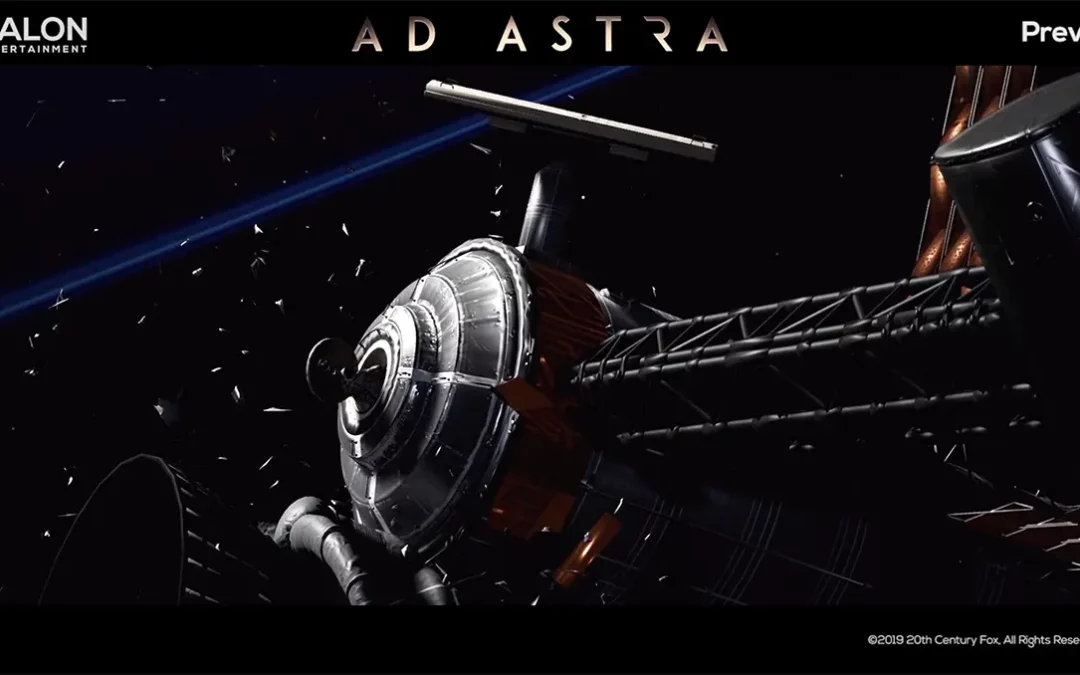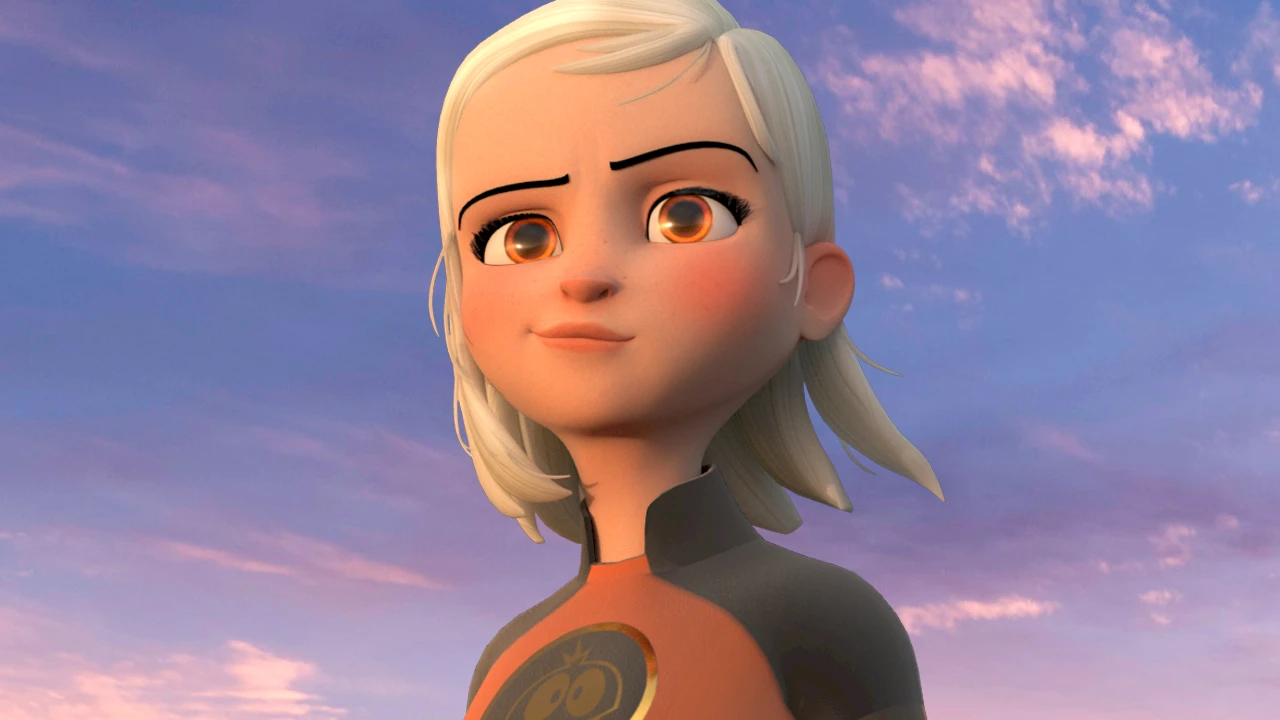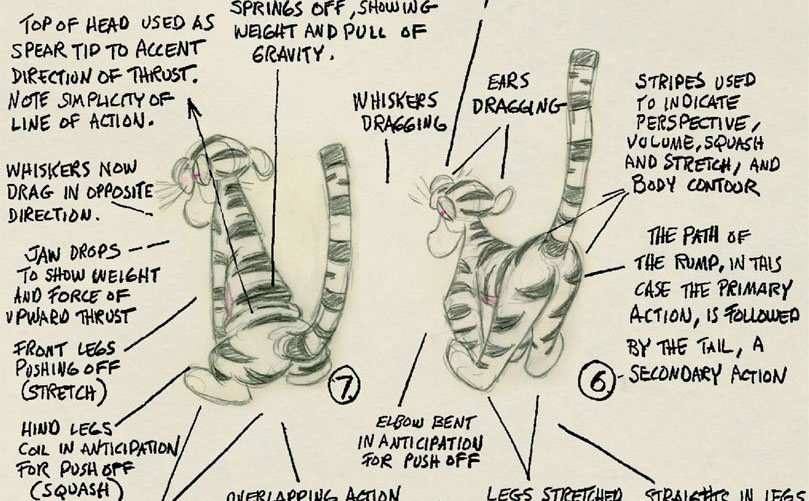
We’re covering the 12 Basic Principles of Animation one principle at a time! Let’s start at the beginning with Squash and Stretch. Learn what it means, why you need to know it, what it looks like, and how to use it to become the best animator you can be. You’ll want to take notes!
What is Squash and Stretch?
Squash and Stretch (S&S for short) is the principle of applying a contrasting change of shape—from a squash pose to a stretch pose or vice versa—to give a feeling of fleshiness, flexibility, and life in animation. The absence of squash and stretch gives a rigidity or stiffness to the motion. The transition between a proper Squash pose to a Stretch pose, or the other way around, breaks the perfect solidity that CG animation in particular inherently gives to everything.
Squash and Stretch In Action
Here the principle of S&S is boiled down to it’s essence on the classic Bouncing Ball. There is a Squash pose on the drawing where the ball is in contact with the ground, and Stretch poses just before and after it to provide the necessary contrast.

The classic bouncing ball with and without Squash and Stretch.
Let’s look at it in motion. In the clip below, the S&S is not extreme, but we can see how even a subtle amount can make a difference by giving a touch of elasticity to the material. It no longer feels like a cardboard cutout or rock hard ball.
Squash and Stretch gives life and flexibility but not only that! It can help convey what the material that something is made of. In the bouncing ball case, very little S&S will indicate a firmer material, like a ping-pong ball or a bowling ball. A rubber ball, would naturally have more S&S. The application of S&S can be quite detailed when done with nuance and not just applied with a thick brush. More does not necessarily mean better.
Why do animators need Squash and Stretch?
Squash and Stretch can make characters and inanimate objects have a feeling of life by introducing a flexible quality. S&S can be applied to a single body part, say an eyeball, or the entire character’s pose. The latter is particularly useful when making rigid objects come to life, like the classic Disney Flour Sack, which is a beginning traditional animator’s test case.
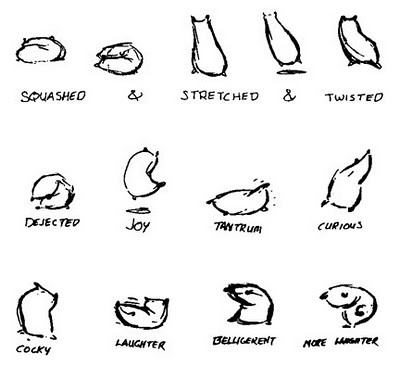
Disney Four Sack Model Sheet, Note: Squash and Stretch Poses
Squash and Stretch does not necessarily have to be applied to the whole pose or object though. As seen here in this analysis by Disney Animator Walt Stanchfield, the shape of Tigger’s butt in these two poses uses S&S.
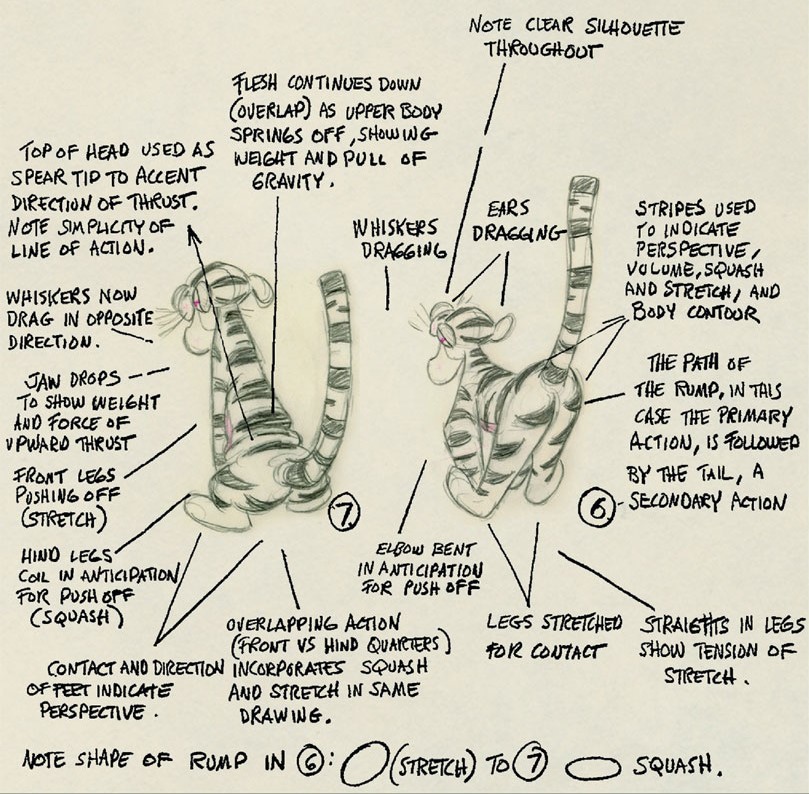
Squash and Stretch within a pose. Even the straight legs vs. bent legs are a form of S&S!

S&S on multiple body parts—cheeks, mouth, eyes, head, ears, even the nose—to give life and believability to the chewing action.
Here’s rough blocking of a head turn using roughly 3 poses, with S&S applied to the overall head shape.
Note that even without the overall head S&S, the principle has been applied within the poses to increase contrast and flexibility. The eyes and brows squash down. The mouth closes and disappears, then stretches into a smile again. Almost every unit or shape on the character can have S&S applied, so it’s something animators think about constantly as they pose. It’s not just added as a pass or layer later.
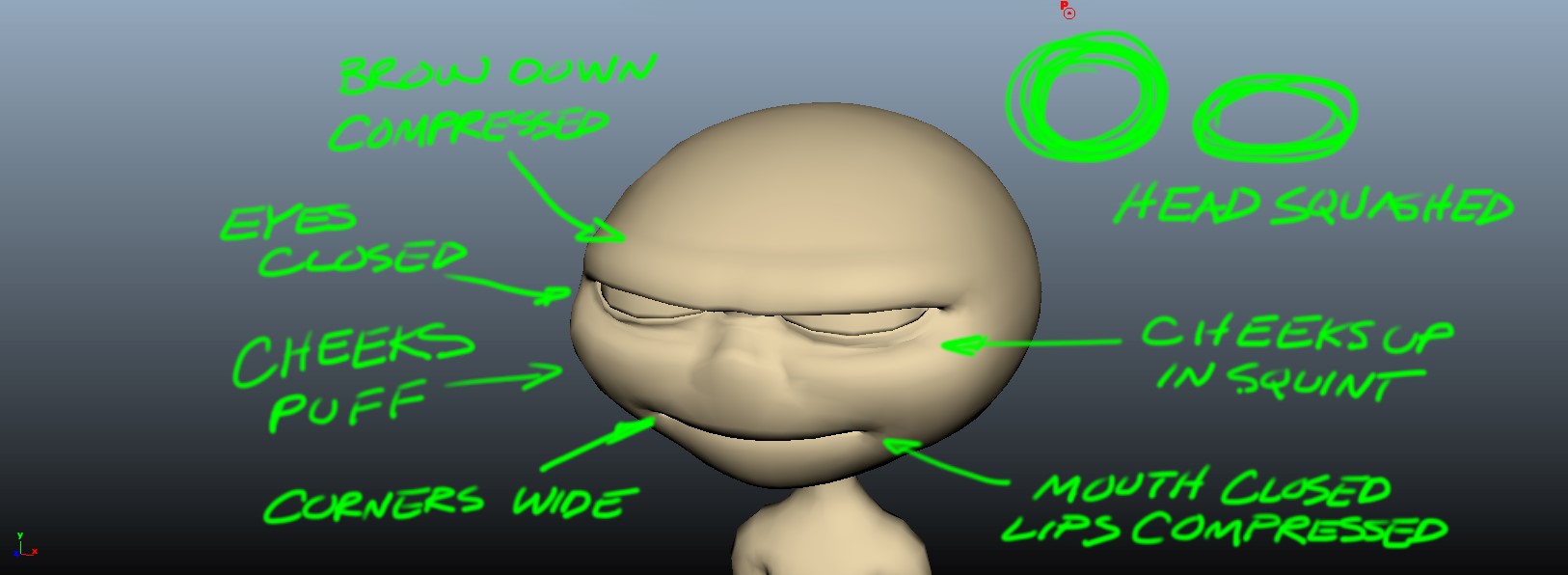
The SQUASH Pose and it’s components.
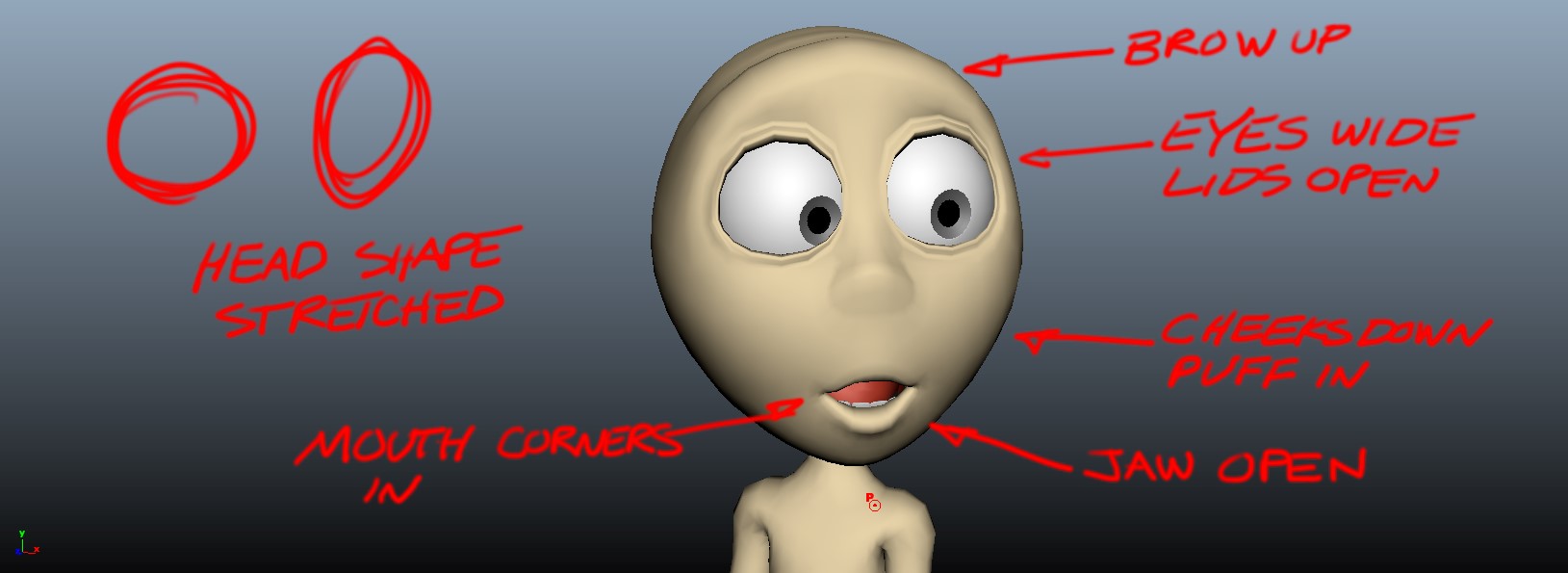
The STRETCH Pose and it’s components.
How to master Squash and Stretch
Overdoing S&S is probably one of the biggest errors of a beginning animator. It’s a fun toy in the box, so everyone wants to play with it and show off. Be careful not to overdo it so your character looks broken/off-model or starts losing believability.
A common saying for a lot of animation studios is to treat S&S with a ‘feel it, but don’t see it’ guideline. The idea being, you feel the S&S when the animation plays back at 24fps, but can’t really see it. Only by stepping through the frames you would see the S&S. If the S&S is too obvious when playing back it is a sign that you are either using too much or the timing for it is too long.
A thing to remember when using broad S&S but want to achieve ‘feel it, not see it’, is to recover out of the extreme S&S poses quickly (transition back to the neutral shape). This gives a nice snappiness to the S&S and keeps the audience from picking up on it and getting distracted.
Maintaining/Preserving Volume
It’s also important to “maintain volume,” that is, the object should not appear to squash or stretch so much that it actually starts to look like it is growing or gaining size and mass. CG rigs can mathematically preserve the volume correctly (as in the case of the Animation Mentor Advanced Ball), but this may not always look “visually correct” to our eye and possibly need to be cheated based on taste and style.
Bouncing Ball, Not Preserving Volume. Note: The squash frame is too big in mass/size/area even though it’s compressed.
This being said, like all “rules” there are times you can break it, particularly for an exaggerated effect. Think of films like Cloudy with a Chance of Meatballs 2. The key, of course, is knowing the rule so you can break it successfully.
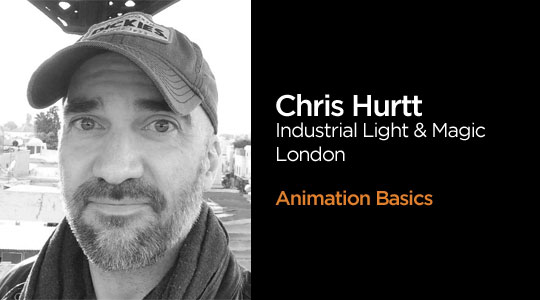
Want to learn from professional animators?
Start your animation journey by learning with professional animators from a variety of studios and career paths! Get more information about Animation Mentor’s Character Animation Program.
